At some point, employees leave. Despite your best efforts to retain them!
Some will leave for a new job, others for personal reasons or to retire. But whatever the reason, you should pay as much attention to an employee who leaves as you do when welcoming a new one.
It's always best to part on good terms because you never know what the future may hold. Many managers neglect departing employees, yet their exit can be an important part of maintaining a positive image for your employer.
The process and policies surrounding an employee's departure are called offboarding.
Exclusive online summit
·
May 23 2024
Moments that matter: how to seed great work
What's in this article
Meaning of offboarding
Offboarding is an administrative process for handling the departure of an employee. Like onboarding, it’s a critical transition period. The way you handle a departing employee can affect your company’s internal and external image.
The offboarding procedure contains all the steps to follow when an employee leaves. It helps to standardize how to manage all resignations or dismissals, taking into account all legal requirements.
When does the employee offboarding process begin?
The offboarding process usually begins when the employee gives you their famous two weeks notice. Several procedures must then be initiated until their employment is officially terminated.
Offboarding can even go beyond their employment.
You can definitely keep in touch with your former employees. They can help with your company's recruitment by referring people they know. They may even come back to you one day!
Why create an employee offboarding process?
It would be a mistake not to value the departure of your employees. Just like their arrival, their leaving is a milestone, and it’s important to accompany them to the end.
You think it's pointless to spend time on an employee who's leaving anyway?
There are many reasons not to ignore a departure! Here's why you should focus on employee offboarding.
Maintain your employer’s image
Ending a collaboration on good terms will positively impact your employer's image.
Your employees are brand ambassadors.
An employee will continue to talk about your company long after they’ve left. It makes sense that if they have reasons to speak highly of your organization, they are less likely to talk negatively about their time onboard.
The way your employees are treated will influence their attitude towards the company. It is in your best interest to take care of them until they leave, whether they do so willingly or not.
Keep in mind that your former employees may continue to work in the same industry.
What do you want them to say when they talk about your company to a competitor?
A smooth transition
Employee offboarding also helps you take care of your team during this transition period. A rough start can cause waves and affect employee morale, motivation and productivity.
The departing employee is not the only one impacted – it can upset the entire team.
It's also an opportunity to plan the transfer of files, projects and know-how. Each of your employees probably has a lot of knowledge that may be lost if you don’t follow up with them. This could cause a skills gap.
Failure to anticipate this transition could lead to embarrassment with your company’s suppliers or customers. Imagine if no one takes over an important task or project!
Attracting and retaining employees
Internally, employees will notice how their colleague's departure is being handled. If they feel that their co-worker is unfairly treated, their opinion towards the company may change.
Also, a departing employee who feels badly treated may spread this negative feeling within the team and outside the company. One departure should not result in a wave of resignations.
On the other hand, an ex-employee who has a positive experience until the end is more likely to speak highly of the company. They may even help you in your recruitment by recommending potential candidates. They may even come back to work for you in the future.
Take the opportunity to make improvements
An offboarding process should always include a final interview. This is an opportunity to review your departing employee's time with the company and receive feedback. Make sure you understand the reasons for their departure.
Listen carefully! They may share some insight on how you can improve.
Employee offboarding checklist
Your offboarding process should reflect your company's image. It must include the human values that are at the heart of your corporate culture, in addition to taking into account the legal and administrative details of the employee's departure.
Obviously, processes differ from place to place and from employee to employee.
Here is an employee offboarding checklist of key points to think about:
- The announcement, internally and externally
- The transition period
- The exit interview (or assessment)
- The handover of company property
- The departure
1. The announcement
When an employee tells you that they are leaving, it is essential to let the team know quickly. You can use this opportunity to point out some of the qualities that were particularly appreciated in that employee.
You will then need to announce the departure externally. Consider notifying customers, vendors and suppliers, among others. It makes for a smoother transition and helps redirect the messaging elsewhere.
2. The transition period
The two-week notice period (or sometimes more) gives you time to ensure that another team member will take overall projects. This is an opportunity to update the tasks that the employee was responsible for so that nothing falls between the cracks.
If your departing employee has knowledge or tasks that are not adequately documented, ask them to create an internal procedures document. You don't want to create an imbalance in organizational skills.
3. The exit interview (or assessment)
It’s always good to know why an employee has chosen to leave. An exit interview is one way to learn more about their decision and hear what they have to say.
Ask them what they liked best and least about working for the company. They may have insight on how to help the company improve.
4. The handover of company property
It’s important to have an inventory of what the employee has in their possession (computer, keys, company ID, credit card, etc.) when their decision to leave is made. All company property must be returned, and the employee will need to be given instructions on how to do this.
5. Finalizing the departure
At the last minute, you will have to remove the departing employee's access to the company’s servers. For example, log-in details will have to be deleted, if applicable, and emails will have to be redirected to the person who will take over the job.
On the administration side, the employee's file can be closed.
Automate offboarding, so you don't forget anything
In an ideal world, employee offboarding is not an activity you will undertake every week. Since it (hopefully) occurs infrequently, it's a good idea to properly document the process in advance to avoid any errors or omissions down the line.
To facilitate this, you can create a learning path in your Workleap LMS platform that explains the offboarding process in detail. This means everything you need is in one centralized place, making the process easier when an employee decides to leave.
Ask for a Workleap LMS demo and find out how you can use our LMS to improve the management of arrivals and departures in your company!
Discover, manage, and grow your team’s skills to unleash their potential and retain your rising stars.




